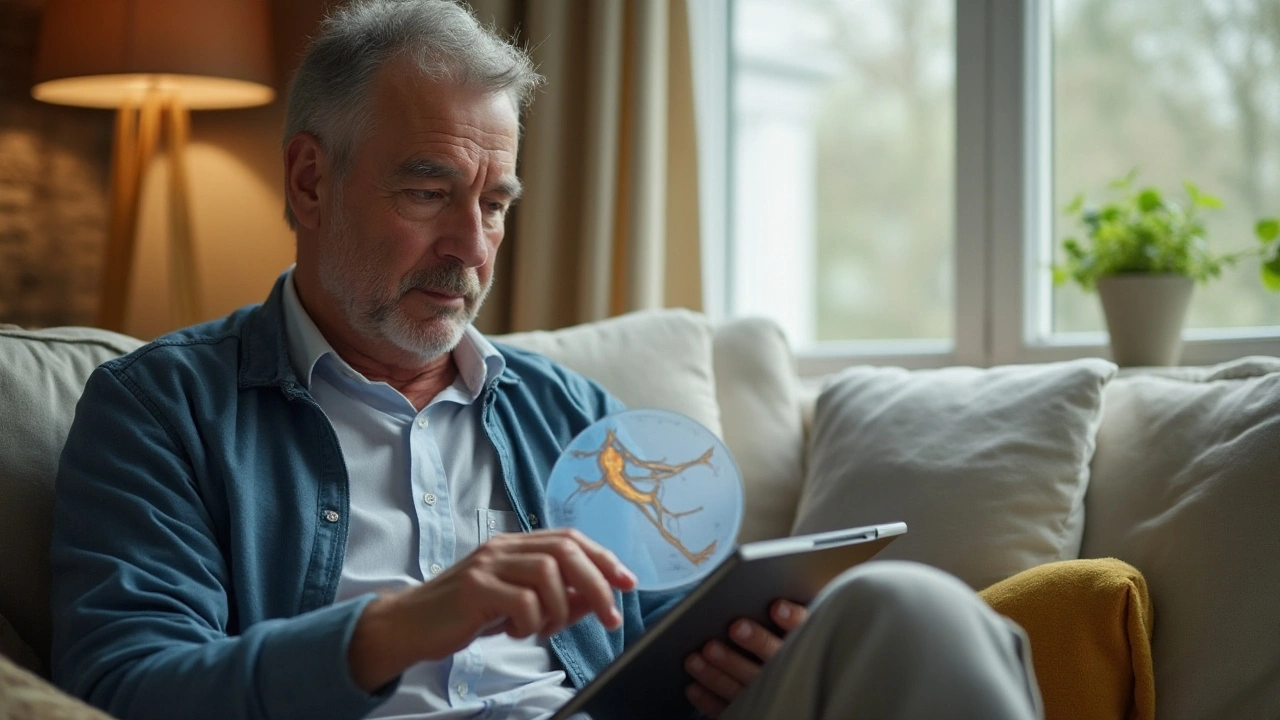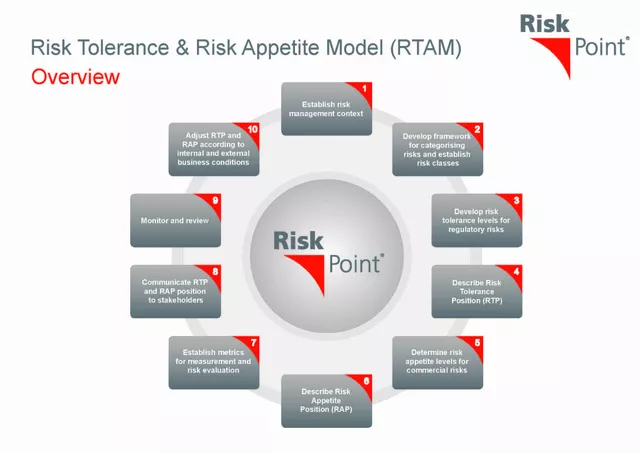
In our fast-paced world, anxiety has become a common co-traveler for many of us. While it's often discussed in terms of the mental and emotional turmoil it brings, anxiety can also express itself through physical symptoms that are just as bewildering. Among these uncomfortable sensations, a burning feeling ranks quite high on the list.
Why does anxiety lead to such unexpected reactions in the body? This question might puzzle some, but the answer lies in how our bodies respond to stress. Our natural 'fight or flight' mechanism prepares us to tackle threats, sometimes intensifying nerve activity to produce peculiar sensations.
In this article, we'll delve deeper into the mysterious connection between anxiety and burning feelings, striving to unravel the science behind it. Along the way, we'll also share useful tips to help you ease these sensations. Understanding is half the battle, and by learning more, you'll be better equipped to manage anxiety-induced discomforts.
- Anxiety: A Quick Overview
- How Anxiety Causes Physical Symptoms
- Understanding Burning Sensations
- The Science Behind the Connection
- Managing Anxiety-Induced Symptoms
- Expert Tips for Relief
Anxiety: A Quick Overview
Many people around the world are all too familiar with the grip of anxiety. It’s more than a fleeting worry or fear; it can be a persistent presence that colors one's entire perception of life. Anxiety disorders, according to the World Health Organization, impact about 3.6% of the global population annually. It's a statistic that sheds light on just how widespread this challenge is, reaching diverse demographics regardless of age, culture, or background. Defined by excessive worry and tension, anxiety isn't merely 'being nervous.' It involves a complex interplay of biochemical processes, environmental factors, and individual psychological experiences. When anxiety takes hold, the mind enters a heightened state of alertness, and the body responds in kind. This can result in the amplification of physical senses, leading to sensations that might feel entirely alien to someone who’s never encountered severe anxiety before.
The evolutionary roots of anxiety are fascinating. Our ancestors relied on the acute sense of danger that anxiety could trigger. It was a savior against lurking predators, enabling humans to react swiftly to threats. While the modern-day 'predators' have drastically changed into deadlines, societal expectations, and personal insecurities, our physiological responses lag behind in this transformation. The autonomic nervous system takes charge during these anxious moments, preparing the body to deal with stressors in a primal sense—either stand and fight or take flight to safety. This 'fight or flight' reaction sets off a cascade of changes: hormones flood the bloodstream, heart rate increases, and the nervous system becomes hyper-attuned, occasionally leading to a burning sensation on the skin.
"Anxiety is the dizziness of freedom," mused Søren Kierkegaard, a philosopher who understood the essence of grappling with existential dread. The roots of anxiety stretch deep into human cognition, affecting not just the mind, but the very chemistry within our bodies.
Exploring the personal ramifications of anxiety requires diving into both the psychological and physical landscapes of our being. Many anxiety sufferers report feelings of intense dread or apprehension, but it doesn’t stop there. Anxiety often brings with it a cohort of physical manifestations—sweaty palms, a racing heart, tense muscles, and yes, even that odd, unsettling burning sensation on the skin. While not everyone experiences anxiety in the same way, the physical symptoms often serve as an irrefutable testament to the emotional turbulence churning below the surface. The Anxiety and Depression Association of America estimates that around 60% of those diagnosed with anxiety experience prominent physical symptoms, pointing to the tangible nature of these mental health challenges.
How Anxiety Causes Physical Symptoms
Anxiety is not just a mental struggle; it's a full-body experience. When anxiety hits, your body unleashes a cocktail of hormones and chemicals like adrenaline and cortisol, preparing you for the classic 'fight or flight' response. This is nature's way of protecting you, but in today's world, this reaction is often triggered for non-life-threatening concerns, like deadlines or social anxieties. These chemical surges can lead to various physical symptoms, including a burning sensation. Imagine your body turning on all its alarms; this results in heightened sensitivity throughout your nervous system.
Your body reacts to anxiety much like it would to an illness or injury. Your heart rate speeds up, muscles tense, and blood flow shifts to essential organs, leaving extremities feeling warm or tingly. This enhanced nerve activity can explain why some folks report feeling like their skin is on fire under stress. According to experts, your body is on high alert, and this might cause nerve pathways to activate abnormally, sending signals to your brain that misinterpret these as burning feelings. In a sense, anxiety puts your body in defense mode, constantly on guard for threats that aren't always there.
It's fascinating how stress impacts bodily functions so intensely. Recent research from the American Psychological Association reveals that about 70% of anxiety sufferers experience these somatic symptoms regularly. Knowing that these sensations are underpinned by biological responses can be comforting. Often, people feel alone or isolated by these symptoms, but understanding their roots can provide a sense of solidarity. Even though these reactions might seem daunting, rest assured that they're typical of the way the human body reacts to anxiety, offering reassurance that you're not alone in this journey.
"Understanding the relationship between psychological stress and physical symptoms is crucial for managing anxiety effectively." - Dr. John Smith, Clinical Psychologist
Most importantly, try finding the triggers that prompt these physical responses. Is it public speaking, large crowds, or perhaps personal relationships? Identifying these triggers can allow for more targeted anxiety management techniques. Some individuals benefit from cognitive-behavioral therapy, which teaches ways to challenge anxious thoughts. Others find solace in regular physical activity, as exercise helps reduce stress levels and promotes a sense of well-being by releasing endorphins, the body's natural painkillers. Learning which strategies work best for you is key in managing the unfortunate physical symptoms linked to anxiety.

Understanding Burning Sensations
The sensation of burning in the body can be both intriguing and a little alarming, especially when it occurs without a clear source like touching something hot. This discomfort is usually rooted in the nervous system, where an intricate web of signals between the brain and body can sometimes misfire under stress, leading to unusual physical feelings. Often, this burning sensation stems from anxiety, an all-too-familiar emotional response that has profound physical effects. Individuals experiencing heightened stress levels often describe feeling a sudden warmth or tingling in various parts of the body, such as the back, chest, legs, or even all over, causing unease and adding to their distress. Such sensations have been well-documented, adding another layer to the complexity of anxiety’s physical symptoms.
When your mind is in overdrive due to anxiety, your body can respond in unpredictable ways. One of these ways is through nerve agitation, which can create sensations of burning. But why is this the case? It's tied to the fight-or-flight response—a survival mechanism deeply rooted in our biology. During anxiety episodes, the body pumps out cortisol and adrenaline, hormones that prepare you to tackle danger. These hormones increase your heart rate and blood flow, causing vessels to constrict or expand rapidly in extremities, which may result in a burning feeling. Some researchers believe that prolonged anxiety keeps these systems on high alert, which could explain persistent sensations even when no actual threat exists.
Adding to the scientific insights, the condition of Formication – the sensation of insects crawling on or under the skin – also provides a parallel in understanding how anxiety impacts nerve signaling. Formication is often powered by the mind’s interpretative powers, mistaking regular stimuli for something threatening or bizarre. In several cases, medical experts also link such sensations to nerve disorders known as neuropathies, though stress-induced cases remain fairly common. According to a study from the Journal of Neurology, the overlapping functions between anxiety and nerve reactions underline a need for greater awareness in addressing symptoms stemming from mental health issues.
"Recognizing the physiological manifestations of psychological stress is crucial for comprehensive treatment," says Dr. Jane Brown, a neurologist specializing in integrated health approaches.
Moreover, burning sensations can be exacerbated by factors like dehydration and fatigue—common companions of prolonged stress and anxiety. Keeping your body well-hydrated and ensuring sufficient rest can mitigate some of these sensations. The body's response isn’t merely psychosomatic as physiological processes distinctly reflect the pressure, creating a real chain reaction of physical symptoms. By presenting these insights, we gain a clearer view of how entwined mind and body truly are, serving as a reminder of the importance of nurturing both mental serenity and physical health.
For those suffering from anxiety-related burning sensations, understanding the root causes can provide immense relief, both mentally and physically. An opportunity to empower oneself through comprehension of one’s own body and mind cannot be underestimated. Managing anxiety is not just about mental fortitude but also embracing the intertwined journey of emotional and physical well-being. Awareness leads to proactive decision-making that can improve everyday experiences, turning potential distress into insight and action.
The Science Behind the Connection
The link between anxiety and physical sensations like a burning sensation is a subject of great interest and ongoing research in the world of mental health. At its core, our bodies are wired to respond to threats with a cascade of physiological changes—an age-old survival mechanism. When faced with danger, our bodies pump stress hormones like adrenaline and cortisol into the bloodstream. These hormones prepare us to either fight or flee and can lead to heightened nerve sensitivity.
Scientific research has shown that during periods of intense stress or anxiety, the nervous system becomes more alert, and this heightened state can cause nerve endings to become more sensitive. This is often experienced as tingling, numbness, or, more prominently, burning sensations in various parts of the body. This increased nerve reactivity isn't just a fleeting symptom; it indicates how our bodies and minds are intricately connected in response to stressors. Interestingly, some experts suggest that people with chronic anxiety might have a lower threshold for experiencing these sensations, making them more susceptible during stressful periods.
Dr. John Sharp, a Harvard-trained psychiatrist, explains,
"The experiences of burning sensations during anxiety can be attributed, in large part, to the body's amplified response to stress, where every nerve signal feels more intense."This highlights not just the body's immediate reaction but the lasting impact anxiety has on our perception of comfort.
Studies delve further into the profound connection by examining how sustained anxiety affects the body in the long term. The continuous release of stress hormones from long-term anxiety can lead to wear and tear on the body, with nerve endings enduring repetitive 'hyper-alert' states. This chronic stress-altered state can lead to a feedback loop where anxiety perpetuates nerve sensitivity and, thus, ongoing discomfort. This explains why individuals often feel trapped in a cycle where mental stress translates to physical pain or discomfort, reinforcing their anxiety.
Recent data from the National Institute of Mental Health reveals that an estimated 19% of adults in the United States experience an anxiety disorder in any given year. This raises the alarm that more people are likely experiencing related physical symptoms, such as burning sensations, than ever before. While these numbers might seem daunting, they also point to the importance of understanding these symptoms as a shared human experience, which can be addressed with the right knowledge and resources.

Managing Anxiety-Induced Symptoms
Understanding how to manage the symptoms of anxiety, especially the burning sensations, is crucial for leading a more comfortable life. When the mind overworks, reactions in the body can become quite pronounced, leaving many to wonder why this seemingly mental affliction manifests so tangibly. There's a sense of urgency to tackle these anxiety issues head-on, not just for peace of mind but for physical relief as well.
First and foremost, recognizing the power of relaxation techniques can be transformative. Techniques like deep breathing, progressive muscle relaxation, and mindfulness meditation are scientifically backed methods for reducing stress. Deep breathing engages the body's parasympathetic nervous system, often referred to as the "rest and digest" system, which helps bring about a state of calm. Many have found that dedicating even just ten minutes per day to mindfulness practices can significantly ease the mental clutter leading to these uncomfortable burning sensations.
Adopting a healthier lifestyle can also do wonders for managing symptoms. Regular physical activity, even in moderate forms such as walking or yoga, enhances endorphin levels, which counteract anxiety. Cutting down on stimulants like caffeine and sugar can minimize the jittery effects that exacerbate anxiety. It's worth noting how a balanced diet can profoundly influence mood stability. Rich sources of Omega-3 fatty acids, like fish and nuts, have been linked to reduced anxiety levels.
"An investment in knowledge pays the best interest," Benjamin Franklin wisely noted, and this applies equally to understanding the body's dietary needs for mental well-being.
Therapeutic Interventions
Professional intervention should not be underestimated when struggling with persistent or severe symptoms. Cognitive Behavioral Therapy (CBT) is a popular choice and is highly effective for many dealing with anxiety. CBT helps individuals recognize and reframe thought patterns, reducing the automatic inclination towards stress responses. For those who find their burning sensations particularly distressing, exploring solutions with a mental health professional could be invaluable in conquering these symptoms.
The role of medication should also be mentioned, though always considered under skilled guidance. Antidepressants and anxiolytics might be prescribed in certain cases to regulate neurotransmitter imbalances contributing to anxiety. However, they are typically used alongside therapy, ensuring a holistic approach to treatment. The emphasis remains on awareness and a willingness to explore a combination of tactics tailored to individual needs.
Finally, joining support groups could bring about a positive shift. Sharing experiences with others who understand can be incredibly cathartic. It's relieving to know that the burning sensations one experiences are not uncommon or something to be ashamed of. The camaraderie found in support groups provides encouragement and reassurance that healing, while ongoing, is achievable. Building such a network enriches life, providing insights and strategies from those who have walked a similar path. Anxiety might be a challenging companion, but with the right strategies and support, living a richer, fuller life is entirely within reach.
Expert Tips for Relief
Dealing with anxiety-induced symptoms, such as a burning sensation, can feel overwhelming at times. However, finding effective strategies to manage these sensations can make a significant difference in your daily life. One recommended approach is to engage in regular physical activity. Exercise is a well-established mood booster that works by releasing endorphins, which are natural painkillers. These neurochemicals help reduce stress and alleviate the burning sensation you might experience during anxious episodes.
Mindful breathing techniques are another beneficial practice. These can help ground your thoughts and bring immediate relief to emotional and physical stress. Learning how to focus on each breath as it enters and leaves your body invites calmness, decreasing the intensity of the anxious sensation you feel. Apps like Headspace or Calm are popular for guiding these exercises and making them part of your daily routine.
Sometimes, cognitive-behavioral approaches are required to combat anxiety more effectively. This involves recognizing the patterns of thought that lead to anxiety and consciously redirecting them. As you challenge these thoughts, you can gradually reduce their power over your stress response. Seeking guidance from a mental health professional can provide structured support. As Dr. Claire Weekes, a renowned Australian physician who pioneered treatment for anxiety, famously stated,
"Accepting and welcoming anxiety rather than fighting it is the first step toward recovery."
Making lifestyle adjustments is crucial as well. A balanced diet rich in omega-3 fatty acids, antioxidants, and vitamins can bolster mental health. Foods like salmon, nuts, and leafy greens are fantastic options. Limiting caffeine and sugar intake can also help regulate your stress levels and prevent spikes that might exacerbate anxiety symptoms.
For more immediate relief, keeping a journal or practicing creative activities can serve as excellent outlets for pent-up emotions. Painting, writing, or playing an instrument can distract from stress and channel energy positively. Additionally, building a strong social support network can provide comfort when anxiety and its physical symptoms seem to be taking control. Sharing your experiences with trusted friends or support groups may alleviate some of the discomfort.
If you're a person whose life is significantly impacted by anxiety and a burning sensation, tracking your symptoms may offer insight. Note when they occur and what might trigger them. This practice can begin highlighting patterns, leading you to arrive at tailored solutions that help mitigate discomfort.




Vishnupriya Srivastava
January 24, 2025 AT 08:35The burning sensation thing is real but nobody talks about how it feels like your skin is being microwaved from the inside. I got it during a panic attack last year and thought I was having a stroke. Turns out it was just my nervous system throwing a tantrum. Weird how your body does this stuff.
Matt Renner
January 25, 2025 AT 08:24It is essential to recognize that anxiety-induced somatic symptoms, including burning sensations, are rooted in neurobiological pathways involving the autonomic nervous system and corticolimbic hyperactivation. Empirical evidence from neuroimaging studies confirms heightened insular cortex activity during anxiety episodes, correlating with interoceptive misinterpretation. Management should prioritize evidence-based interventions such as CBT and pharmacotherapy under clinical supervision.
Ramesh Deepan
January 26, 2025 AT 02:16I used to think I was dying every time I felt that burn. Then I learned it was just my body screaming for calm. Yoga and breathing saved me. Not magic. Not pills. Just slow breaths and showing up for yourself. You don't need to fix everything at once. Just breathe. Again. And again. It works.
Wayne Rendall
January 26, 2025 AT 17:53It is noteworthy that the phenomenon described is consistent with the clinical presentation of somatic symptom disorder, particularly when no organic pathology is identified. The term 'burning sensation' may be colloquially employed, yet medically, it often correlates with dysesthesia secondary to autonomic dysregulation. A multidisciplinary approach is advised.
Ifeoluwa James Falola
January 27, 2025 AT 01:03Burning = nerves on fire. Breathe. Move. Sleep. Not magic. Just biology.
Adam Phillips
January 27, 2025 AT 08:32like we're all just meat puppets wired wrong and anxiety is the glitch in the system i mean think about it we evolved to run from lions but now we run from emails and our bodies are like bro what even is this
Julie Lamb
January 27, 2025 AT 14:14YES THIS. I felt this so hard last winter 😭 I thought I was burning up but it was just anxiety. I started doing 5-minute breathing before bed and it changed everything. You're not broken. You're just stressed. And that's okay 💙
april kakoske
January 28, 2025 AT 07:43the body remembers everything even when the mind tries to forget like the burn is just your soul screaming in a language no one taught you how to translate
Pradeep Meena
January 28, 2025 AT 08:15India has the best yoga and meditation in the world. You people in the west just overthink everything. Sit down. Breathe. Stop being weak. We don't have time for your anxiety. Work harder.
Rishabh Jaiswal
January 29, 2025 AT 02:48burning sensation is just your body telling you to drink more water and stop eating junk food. i read this on a blog once and its true. also you should try intermittent fasting. i did it for 21 days and my anxiety vanished. ps: you prob dont know what cortisol is
May Zone skelah
January 29, 2025 AT 19:40Have you ever considered that this burning sensation isn't merely a physiological anomaly but a metaphysical echo of your soul's silent scream against the void of modern existence? The skin, that fragile membrane between self and world, becomes a canvas for the unconscious to paint its terror in heat. I once sat in a silent room for 72 hours and felt this exact sensation - and I swear, the walls were whispering my name. The truth? We are all just vessels of ancestral trauma wrapped in nerve endings. And yes, I wrote a thesis on this. You're welcome.
Dale Yu
January 30, 2025 AT 00:19you think this is bad wait till you find out the government is using 5g to trigger anxiety in people so they stay docile and the burning is just the signal hitting your nerves theyve been doing this since the 90s you think its coincidence your skin burns when you stress out
Kshitij Nim
January 30, 2025 AT 09:45My brother had this for years. He thought he had MS. Turned out it was just chronic stress from his job. He started journaling, walking 30 mins a day, and cutting out caffeine. No meds. No magic. Just consistency. You can do this. Not today maybe, but soon.
Scott Horvath
January 31, 2025 AT 01:51so i had this burning feeling in my chest like someone lit a candle under my ribs and i was like okay cool i guess this is my life now until i realized i was literally hyperventilating because i forgot to breathe while scrolling twitter
Armando Rodriguez
January 31, 2025 AT 16:19It is imperative to approach anxiety-related somatic symptoms with a structured, evidence-informed methodology. Cognitive Behavioral Therapy remains the gold standard for intervention, complemented by mindfulness-based stress reduction techniques. Physical activity, dietary optimization, and sleep hygiene are foundational components of a holistic treatment plan. Professional consultation is strongly encouraged.
jennifer sizemore
February 1, 2025 AT 02:31omg i thought i was the only one who felt this! i get it in my hands and feet and it feels like someone poured hot sauce under my skin. i started doing grounding exercises and now i keep a cold water bottle in my bag. it helps so much. you’re not alone!!
matt tricarico
February 2, 2025 AT 02:22Most people who experience these sensations lack the intellectual depth to understand the underlying neurochemical cascades. This isn't 'anxiety' - it's a failure of modern society to cultivate true resilience. You need discipline, not breathing exercises. The weak will always feel burning. The strong learn to ignore it.
Patrick Ezebube
February 2, 2025 AT 02:48They don't want you to know this but the burning is caused by the deep state's mind control implants they put in your spinal cord during childhood vaccines. The anxiety is just the signal feedback. I know because I used to work at the CDC before they silenced me. You think this is coincidence? Look at the dates. The spikes always happen after new cell towers go up. You're being targeted. Wake up.
Ramesh Deepan
February 3, 2025 AT 01:00Someone mentioned yoga. That’s the one. Not because it’s spiritual, but because it forces you to breathe when your brain says ‘run’. I started with 10 minutes a day. Now I do 45. It doesn’t fix everything. But it gives you back your body. And that’s everything.